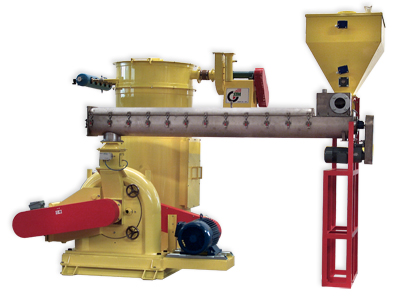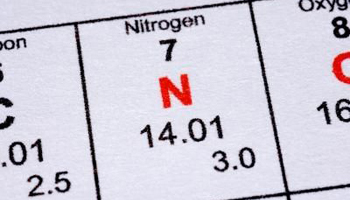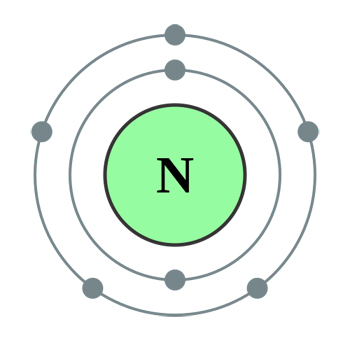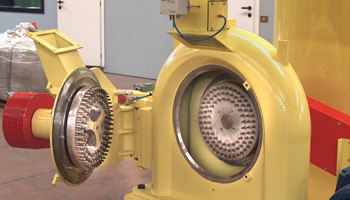CRIO-PLANT
STM equipment for cryogenic applications:

Cryogenic grinding
Pulverization processes normally carried out at ambient temperature can be done at cryogenic temperatures, obtaining higher quality ground products and reducing energy costs.
Heat-sensitive substances with low softening points such as elastomers, rubbers, resins and oily products, can be milled effectively by the use of liquid nitrogen to bring them to their brittle temperature.
Certain materials which cannot be processed in conventional-type mills can now be ground cryogenically.

Liquid or gaseous nitrogen
Liquid nitrogen has three main functions
- Rapidly cools materials to brittle temperature before introduction into the mill
- Maintains a constant working temperature by absorbing heat produced during the grinding process
- Produces an inert, extremely dry and non-toxic atmosphere in the milling plant.
Substances ground cryogenically are physically different from those ground using traditional methods, because of the way in which the material's structure is broken down.
Substances which have been made brittle cryogenically display homogeneous, crystalline cubic grains: milling at ambient temperature, however, results in powders whose physical properties are non-uniform, because the initial matrix is continually damaged by the flow of crystal planes or the reticular structure of the material.

Uses and Advantages
Cryogenic grinding can be successfully and economically used in the milling of elastomer waste, plastic materials and in all fields where organoleptic, physical or chemical properties need to be blocked cryogenically and maintained in the final product.
Positive factors of cryogenic grinding are:
- Higher yield
- Better quality end product, without abnormal tearing or breakdown in the molecular structure
- Reduction in energy use
- Higher quality end product
- Less waste from oxidation and overheating
- Finer and more homogeneous product
- Reduction in material to be re-processed in the milling system
The quantity of liquid nitrogen used in cryogenic grinding processes is a fundamental consideration when evaluating for or against; this varies according to the materials processed.

Organic Substances
Various combustible, combustive and organic materials can be processed easily and safely, resulting in products which retain not only their physical properties but also their chemical and organoleptic qualities.
The design of our machinery conforms to current ATEX (anti-explosion) legislation, using nitrogen gas as a de-activating agent.
Generic data
Examples follow of cryogenic grinding plants with sieve particulate selection.Machine Model: series MPC 400 peg impact mill

| Tipo Prodotto | Produzione kg/h |
Finezza in µ < |
Temperatura °C |
Consumo d'azoto l/kg |
|---|---|---|---|---|
| Polietilene a bassa densità | 160 | 200 | -30 | 1,5 |
| Hostalen | 70 | 160 | -60 | 3,3 |
| Poliammide | 144 | 200 | -60 | 2,3 |
| Poliammide x 2007 | 130 | 800 | -60 | 1,7 |
| Resina epossidica | 400 | 100 | +5 | 0,4 |
| Viton | 70 | 200 | -20 | 3 |
| Epdm | 220 | 1000 | -29 | 1,5 |
| Polietilene alta densità | 90 | 315 | -60 | 3,2 |
| Poliestere P1500 | 300 | 315 | -15 | 0,7 |
| Poliestere S1218 | 140 | 250 | -30 | 1,4 |
| Pvc | 200 | 400 | -15 | 1,2 |
| Pvc duro | 500 | 800 | -10 | 0,6 |
| Metilcellulosa | 130 | 200 | -40 | 2,3 |
| Cellulosa | 80 | 200 | -65 | 2,8 |
| Zolfo | 850 | 40 | 0 | 0,4 |
| Vaniglia | 180 | 300 | -45 | 1,5 |
| Pepe | 500 | 630 | +5 | 0,4 |
| Gomma arabica | 120 | 50 | 0 | 0,5 |
| Fitosterolo | 250 | 200 | -40 | 1 |
| Funghicida | 40 | 100 | -20 | 1,8 |
| Monogliceridi | 150 | 80 | -20 | 0,85 |
| Sulfadimetossina | 250 | 50 | -5 | 0,3 |
| Cefalosporina | 150 | 100 | -15 | 0,5 |
| Fruttosio | 300 | 50 | 0 | 0,3 |
| Nylon 12 | 95 | 400 | -140 | 2,4 |
| Poliuretano | 120 | 200 | -45 | 1,6 |
| TiO2 | 120 | 315 | -15 | 1,1 |
| Resine viniliche (colori) | 140 | 400 | -15 | 1,2 |
| Vestamid T170 | 130 | 200 | -70 | 1,8 |
| Vestamid T250M | 192 | 200 | -60 | 1,9 |
| Poliammide 6 | 203 | 400 | -60 | 1,4 |
| Cannella | 110 | 200 | +5 | 0,8 |
| Soja (<1 mm) | 600 | 50 | 0 | 0,4 |
| Funghi secchi (5mm) | 360 | 160 | 0 | 0,5 |
| Noce moscata in pezzi | 760 | 800 | +10 | 0,3 |
| Chiodi di garofano | 200 | 315 | -5 | 0,9 |
| Melarancia | 150 | - | -5 | 1 |
| Biancospino | 500 | 200 | +5 | 0,5 |
| Caseina | 400 | 200 | -20 | 0,85 |
| Comino | 400 | 400 | 0 | 0,6 |
| Coriandolo | 550 | 400 | 0 | 0,3 |
| Formaggio | 520 | 400 | +5 | 0,4 |
| Zenzero | 480 | 400 | +5 | 0,4 |
| Finocchio | 330 | 250 | +10 | 0,6 |
| Anice | 200 | 500 | -15 | 0,9 |
| Senape | 220 | 400 | -5 | 0,85 |
| Caffè tostato | 170 | 50 | -25 | 1,1 |
| Benzocaina | 170 | 125 | 0 | 0,8 |
| Steroidi A | 450 | 32 | 0 | 0,6 |
| Steroidi B | 250 | 32 | -20 | 0,9 |


